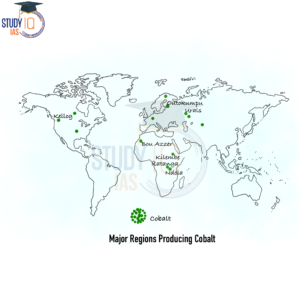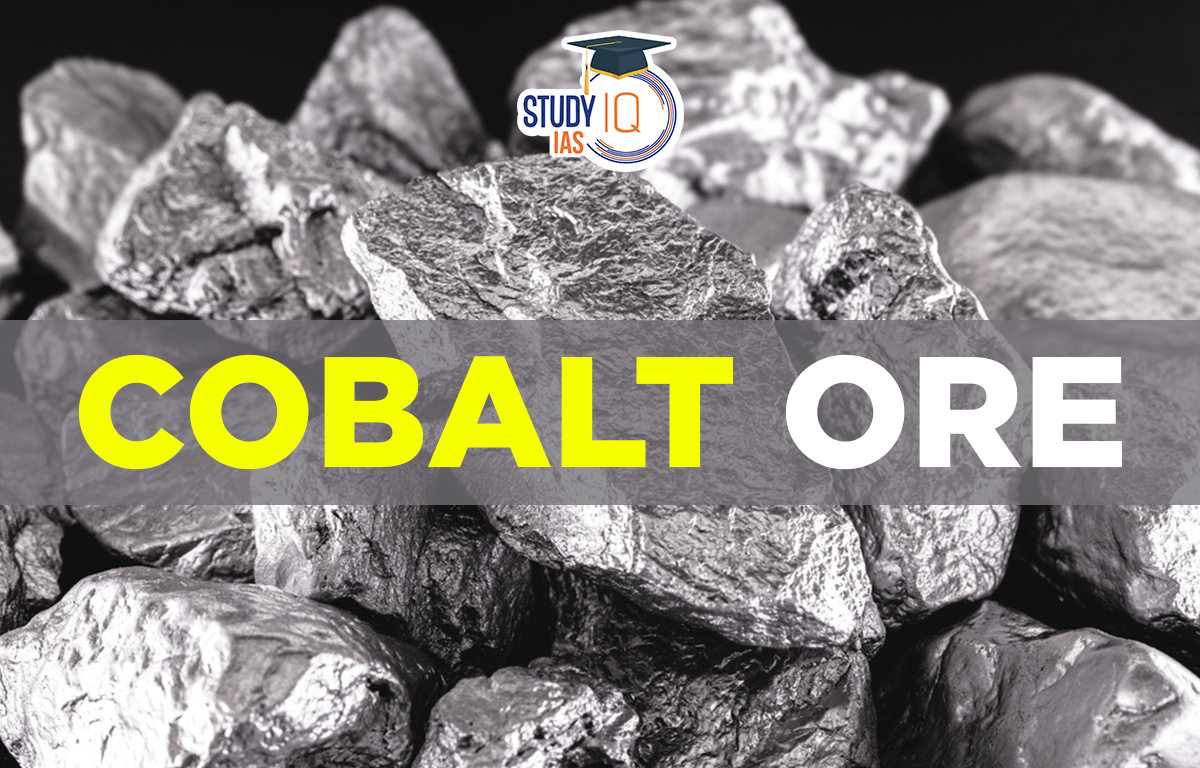Table of Contents
Cobalt Ore
Cobalt ore is a hard, shiny, silver-white metal that can be magnetic. It does not react with water and is very stable in the air. Some common types of cobalt ore are Cobaltite and Skutterudite. Cobalt ore is mostly mined in countries like the Democratic Republic of the Congo, Zambia, Canada, Russia, and Australia. After mining, the ore is processed to get the cobalt metal.
Read More: Types of Resources
What is Cobalt?
Cobalt is an element in group VIII of the periodic table. It shares similar physical properties with iron and nickel. You can find cobalt in plants and animals, as well as in air, water, soil, and rocks. It can also come from dust carried by the wind or rain washing away soil and rocks that contain cobalt. As a pure metal, cobalt is a hard, shiny silver-gray material made through a process called reductive smelting. It makes up only 0.001% of the Earth’s crust, with most of it found in the Earth’s core.
Cobalt is used to make parts for aircraft engines, gas turbines, high-speed steels, and corrosion-resistant alloys. It is also found in magnets and magnetic recording devices. A special form, Cobalt-60, is used in medical treatments and to irradiate food. Cobalt is stable in the air and doesn’t react with water, but it does react slowly with weak acids.
Read about: Minerals
Cobalt Distribution in India
Cobalt has been found in the districts of various States of India which is given below in the table.
| State | District |
| Jharkhand | Singhbhum |
| Odisha | Kendujhar |
| Jajpur | |
| Rajasthan | Jhunjhunu |
| Nagaland | Tuensang |
| Madhya Pradesh | Jhabua |
| Hoshangabad |
Read about: Energy Resources
Cobalt Distribution in World Map
The Democratic Republic of Congo is the world’s largest producer, followed by Russia and Australia. Congo accounts for more than half of global cobalt mine output.

Cobalt Ore Uses
Cobalt is used in various industries and applications such as:
- Many alloys and superalloys contain cobalt. They are used to make parts for aircraft engines, gas turbines, high-speed steels, corrosion-resistant alloys, and cemented carbides.
- Cobalt is also used in the petroleum and chemical industries as a catalyst.
- Paints and inks use cobalt as a drying agent.
- Artists and craftspeople primarily use it in porcelain, stained-glass pottery, enamel jewellery, and tiles.
- It is also an essential mineral used for batteries in electric cars, computers, and cell phones.
Cobalt Ore Properties
Cobalt is a chemical element with the symbol Co and atomic number 27. Some of its properties are:
- It is a hard ferromagnetic element that is silver-white, lustrous, and brittle.
- It is air-stable and does not react with water.
- It reacts slowly with dilute acids.
- The metal melts at 1495 degrees Celsius and boils at 2927 degrees Celsius.
- When mixed with aluminum and nickel, it creates very strong magnets.
- Used in alloys for jet engines and gas turbines due to its strength at high temperatures.
- Its shiny, hard, and rust-resistant properties make it ideal for electroplating, giving objects a nice finish.
- Cobalt salts are used to create bright blue colors in paint, porcelain, glass, pottery, and enamels.
- The radioactive form, cobalt-60, is used to treat cancer and to help preserve food by irradiation.
Cobalt UPSC
KABIL, an Indian mining joint venture formed by state-owned companies National Aluminium Co, Hindustan Copper Ltd, and Mineral Exploration Corp Ltd, has signed a preliminary agreement with Australia’s Critical Minerals Facilitation Office (CMFO). The goal is to look into lithium and cobalt mines in Australia.
Over the next six months, India has agreed to invest $6 million with the Australian government to explore lithium and cobalt mines in Australia. India is offering $2.4 billion in incentives to companies that build battery cells for electric vehicles in India. The agreement also allows for the inclusion of any other Indian state-run firm as an investment partner, and it is expected that the due diligence process will be completed and additional investment decisions will be made within the next six months.


 Jallianwala Bagh Massacre, Date, History...
Jallianwala Bagh Massacre, Date, History...
 Important Lakes of India, State wise and...
Important Lakes of India, State wise and...
 Buddhism History, Origin, Sect, Councils...
Buddhism History, Origin, Sect, Councils...





















